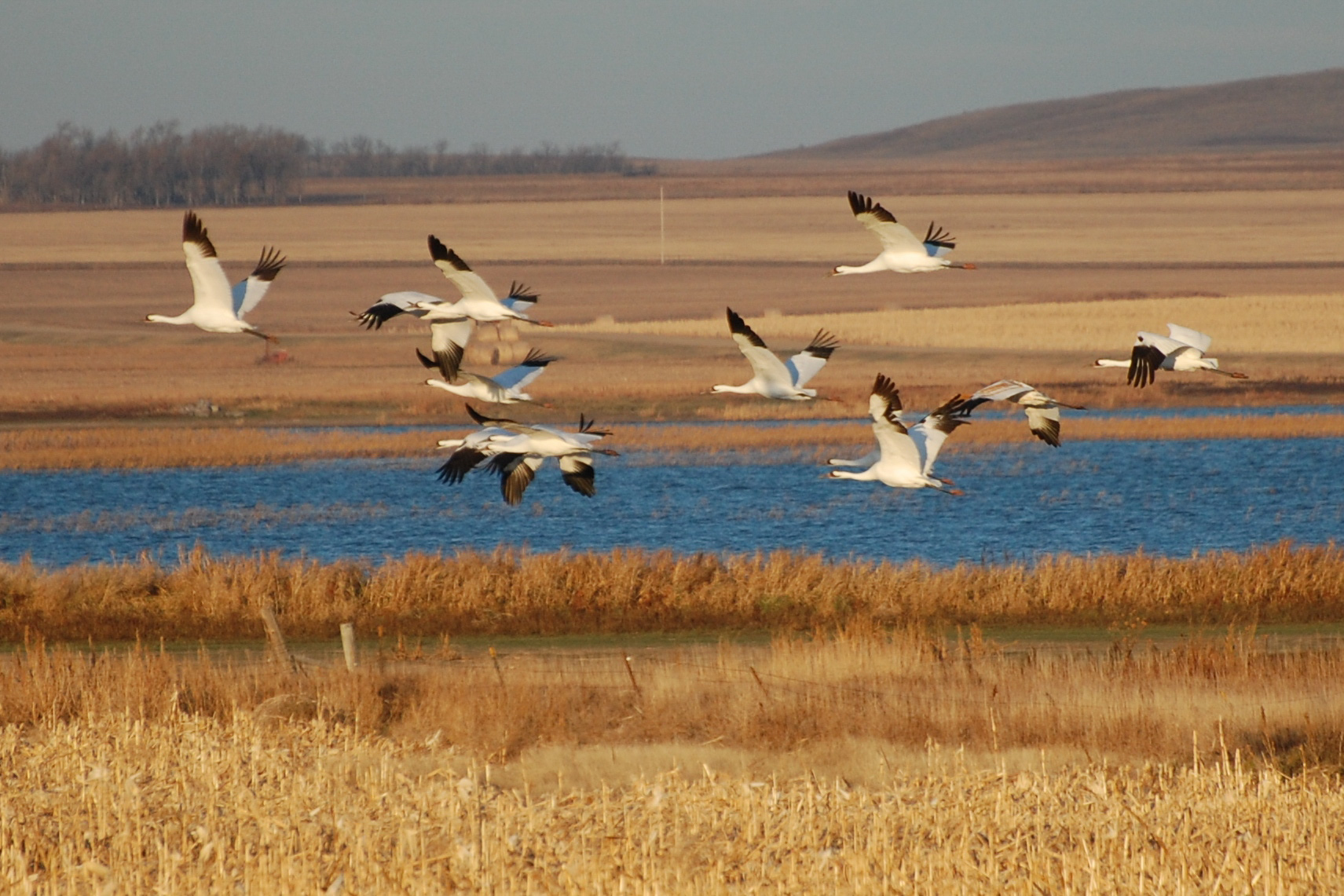Whooping Cranes: Making a Comeback
By Eileen Dowd Stukel
This extremely rare and iconic bird has been the subject of extensive study and years of dedicated work in Canada and the U.S. The whooping crane (Grus americana) is found only in North America. It once nested from southern Saskatchewan and Manitoba southeastward through northeastern North Dakota, western Minnesota and northern Iowa to central Illinois. The breeding range contracted as habitats were converted for other uses and as birds were killed for their plumage and meat. Population estimates ranged from 500-700 individuals in the 1870s to an all-time low of 15-16 birds by 1941.
This species was among the first to be protected by endangered species laws. It was listed as endangered in 1967, even before the current Endangered Species Act was passed in 1973. Other legal remedies included the 1937 designation of a critical wintering area along the Texas Gulf Coast as the Aransas National Wildlife Refuge. Wood Buffalo National Park in Canada was established in 1922 to protect wood bison. Whooping cranes were discovered nesting at Wood Buffalo in the mid-1950s.
In spite of these efforts, protection of the bird and important habitats were not enough to restore a species not designed for quick recovery. Whoopers typically do not breed until they are 3-4 years old. The female usually lays two eggs, but often only one chick successfully fledges.
Family groups undertake a long, challenging migration to Aransas in the fall, with a return trip to Wood Buffalo the following spring. Wintering birds, their habitat and food sources are vulnerable to hurricanes and contaminant spills in the Gulf Intracoastal Waterway.

Recovery plans help chart the course for rare species recovery. For the whooping crane to be downlisted to threatened status, the Aransas-Wood Buffalo flock must have 40 nesting pairs, and two additional wild flocks must have at least 25 pairs each, all sustained at those levels for 10 years. Two projects are in progress to fulfill the need for additional wild flocks.
Louisiana once hosted a non-migratory flock of whoopers and provided wintering habitat for the main, migratory population. Wetland drainage and unregulated harvest took a toll, and the last whooper in Louisiana was moved to Aransas in 1950. Young, captive-reared whooping cranes have been released at White Lake Conservation Area in Vermilion Parish since 2011 to help establish a non-migratory flock, separate from the Aransas-Wood Buffalo flock. In 2017, the first whooping crane chicks hatched in Louisiana in 78 years. As of July 2019, this population had 72 birds, mostly in Louisiana.
The Whooping Crane Eastern Partnership represents an ambitious effort to establish a second migratory population, also separate from the Aransas flock. You may have seen footage of ultralight aircraft flying ahead of whoopers. Young whoopers do not instinctively know how and where to migrate. This flock had to be taught until enough adults could lead their young to suitable wintering areas along Florida’s Gulf Coast and then return to nesting areas the following spring. The current experimental strategy is to allow whoopers to be reared by captive parents before the young are sent to Wisconsin for “adoption” by adults without young. Birds are banded and fitted with VHF transmitters to monitor movements, nesting and mortality. As of July 2019, this experimental population had 87 birds, not counting 2019 production.
The whooping crane’s comeback story epitomizes the value of cooperation and hard work. These long-running, challenging and expensive efforts are needed to restore extremely rare species, but this example is not ideal. Many conservation agencies and organizations promote an alternative strategy that emphasizes preventive measures and habitat protection to head off such scenarios. Dedicating attention and funding up-front to monitor and protect a diverse array of habitats will better assure the future of the plants, fish, wildlife and people who need these habitats.
Read the Whole Conservation Digest Here
Subscribe to Conservation Digest
*photo credits: Diana Tong near Collins Slough in Hand County

